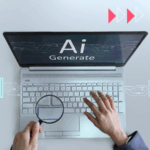As the martech industry scrambles to designate the official method for elevating visibility in the AI era, too much energy is wasted sorting competing abbreviations. It’s time to make a choice.
By Patrick Briggs, CEO of Semify
Given all the “SEO is dead” discourse lately, you’d think we’d have settled on a replacement strategy that fits this new era of artificial intelligence content discovery. And while I hate to be the one proposing yet another acronym, we may as well note that the advertising, media, and martech spaces have already embraced Artificial Intelligence Optimization — and for good reason.
We are in the midst of unprecedented growth in the nature of web information gathering. AI has already changed the ways users’ queries for online information are accessed.
Still, SEO’s demise has been greatly exaggerated (hint: what powers the discoverability of websites in the SERP is similar to LLMs). But SEO is too narrow to describe how the internet is changing to deliver the right content to the right audience, in the right medium with LLMs.
What we need, then, is a separate category of tools and methodologies that actually describes the kind of SEO work we’re now doing for AI.
I’ve been watching this naming convention circus: We’ve seen the unwieldy “generative engine optimization,” or GEO. Then there’s more limited “answer engine optimization” (AEO) which might evolve to Agentic Engine Optimization? It’s like watching people try to describe a snowstorm by looking at a single snowflake.
Unless we agree on a universal identifier, we’ll remain stuck in a confusing AI snow drift that will cover us all.
Acronym Collision
Here’s the most obvious issue: “GEO” already means something. I took geography in school. I also took geometry. There are already plenty of things abbreviated as “GEO,” and none of them have anything to do with AI.
Geo-fencing-marketing is still very much alive and relevant, particularly in local search and retail media. Creating “acronym collision” between two distinct disciplines is just poor industry stewardship. When I’m talking to enterprise clients about their digital strategy, the last thing I want is confusion about whether we’re discussing location-based display advertising or AI optimization.
But the real problem with “Generative Experience Optimization” goes deeper than acronym confusion. The term is already obsolete.
AI is quickly moving beyond generating text responses or creating multimedia files. We’re entering the era of agentic AI and quick on the heels of agentic AI will be robotic AI. This is a point where systems can manipulate browsers directly, interact with websites, and execute complex tasks without human intervention.
When an AI agent can navigate your website, fill out forms, and make purchases on behalf of a user, that’s not a “generated experience” anymore. That’s direct machine-to-machine interaction. And it requires an entirely different optimization approach— one that is not accurately or clearly defined by GEO.
The Scope: Limitations of Current Thinking
The same limitation applies to AEO. It’s too narrow a view of what AI capabilities represent. These systems aren’t just “answer engines” anymore.
This is why I’ve been pushing AIO. It’s comprehensive enough to encompass everything we’re dealing with now. It’s also flexible enough to evolve with whatever comes next. Whether we’re talking about current chatbots, future agentic AI, specialized small language models, or robotic interfaces, AIO covers it all.
I know Google is currently using AIO to describe their AI Overviews. Some people are hesitant to adopt the term because of that association. But Google is clearly moving everything toward “AI Mode,” which will phase out their current AIO terminology. We shouldn’t let Google’s transitional branding prevent us from using the most accurate description of what we’re actually doing.
A Precise Vision
The real opportunity — and the real challenge — is thinking beyond just getting cited in ChatGPT responses. AI optimization isn’t about one specific system; it’s about creating digital experiences that work seamlessly across every AI touchpoint a customer might encounter.
Consider the agentic future that’s already beginning to emerge. How do you create a website that’s easy for an AI agent to navigate when it’s trying to schedule an appointment for a user?
How do you structure your content so that an AI shopping assistant can efficiently evaluate your products against competitors? How do you ensure your brand maintains its voice and positioning when AI systems are intermediating most customer interactions?
These questions go far beyond traditional SEO. And they certainly can’t be addressed by thinking in terms of “generative experiences” or answer engines. They require a comprehensive approach to AI optimization that considers the full spectrum of how artificial intelligence will interact with your digital presence.
AIO captures the full scope of where optimization is heading. I’m not just talking about today’s generative experiences, but tomorrow’s “AI-everywhere reality.” It’s future-proof enough to evolve with the technology while being specific enough to provide clear guidance for practitioners.
Precise language isn’t just helpful. For those who care about ensuring the best content is recognized and valued, embracing AIO might just be a matter of survival as every evolution is.
About the Author
Patrick Briggs, CEO of Semify, the white label digital marketing platform







